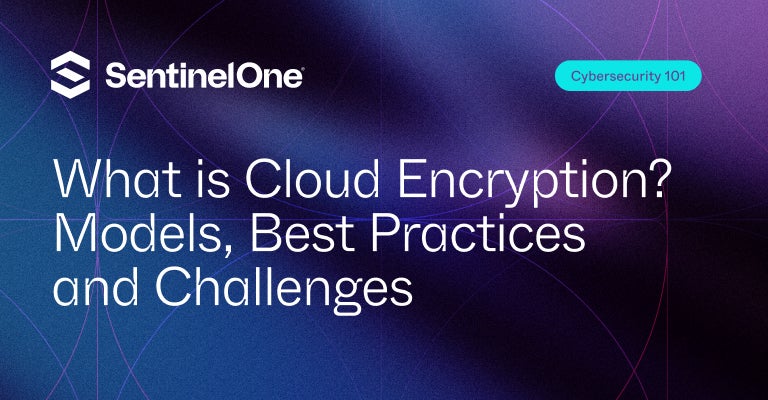In today’s cloud-centric world, data security is paramount. Our comprehensive guide explores the intricacies of cloud encryption, arming you with the knowledge to protect your sensitive information from prying eyes.
Discover the latest encryption techniques, best practices, and industry standards that will give you peace of mind as you navigate the cloud landscape. Whether you’re an IT professional or a business leader, this guide is your key to unlocking the full potential of cloud computing while maintaining robust data security.

Symmetric vs. Asymmetric Encryption
Before diving into cloud encryption, it’s essential to understand the two primary types of encryption: symmetric and asymmetric.
Symmetric Encryption
Symmetric encryption, also known as secret key encryption, uses a single key for both encryption and decryption. The same key must be securely shared between the sender and receiver to access the encrypted data. Some common symmetric encryption algorithms include AES, DES, and 3DES.
Asymmetric Encryption
Asymmetric encryption, also known as public key encryption, employs two distinct keys: a public key for encryption and a private key for decryption. The public key can be shared openly, while the private key must be kept secret. RSA, DSA, and ECC are popular asymmetric encryption algorithms.
Cloud Encryption Models
There are three main models for cloud encryption, each offering varying degrees of control and security.
Server-side Encryption
In server-side encryption, the cloud service provider encrypts the data before it is stored on their servers. This method offers a balance between security and ease of implementation. However, it requires trust in the provider’s security measures and key management practices.
Client-side Encryption
Client-side encryption involves encrypting data on the client’s end before uploading it to the cloud. This approach provides a higher level of security, as only the client has access to the decryption keys. However, it can be more complex to implement and may limit some cloud services‘ functionality.
End-to-end Encryption
End-to-end encryption ensures that data is encrypted at the source and remains encrypted until it reaches the intended recipient. This method provides the highest level of security, as the encryption keys are only available to the sender and receiver. However, it can be more challenging to implement and maintain.
Key Management in Cloud Encryption
Effective key management is crucial to the success of any cloud encryption solution. Key management refers to creating, distributing, storing, and retiring encryption keys. Key management best practices include:
- Utilizing hardware security modules (HSMs) for key storage and generation.
- Implementing key rotation policies to mitigate the risk of key compromise.
- Employing robust access controls to limit key access to authorized users.
Best Practices for Implementing Cloud Encryption
To ensure the effective implementation of cloud encryption, organizations should follow these best practices:
- Assess your data: Identify the data you store in the cloud and classify them based on sensitivity and regulatory requirements.
- Choose the suitable encryption model: Consider the level of security and control needed for your specific use case, and select the appropriate encryption model accordingly.
- Implement key management best practices: Establish a robust key management policy and follow industry best practices to ensure the security of your encryption keys.
- Monitor and audit: Regularly monitor and audit your cloud encryption implementation to ensure its effectiveness and compliance with regulatory requirements.
- Train your employees: Educate your staff on the importance of cloud encryption, proper key management, and security best practices to minimize the risk of human error.
- Leverage multi-factor authentication: Use multi-factor authentication (MFA) to add an extra layer of security, ensuring that only authorized users can access your encrypted data.
- Choose a reputable cloud service provider: Select a provider with a strong track record in security and a commitment to keeping your data safe through encryption and other security measures.
- Stay informed and adaptable: Keep up-to-date with the latest developments in encryption technologies and update your practices as needed to maintain the highest level of security.
Challenges and Considerations in Cloud Encryption
While cloud encryption offers numerous benefits, it also presents some challenges that organizations must consider:
- Performance: Encryption and decryption can introduce latency, which may impact the performance of cloud applications and services.
- Compliance: Organizations must ensure that their cloud encryption practices comply with relevant regulatory requirements, such as GDPR, HIPAA, and PCI DSS.
- Vendor lock-in: Choosing a proprietary encryption solution from a cloud service provider may result in vendor lock-in, making it difficult to switch providers or adopt a multi-cloud strategy.
In conclusion, cloud encryption is essential to a robust cloud security strategy. By understanding the different encryption models, implementing key management best practices, and following the guidelines outlined in this guide, organizations can significantly enhance the security of their data stored in the cloud.